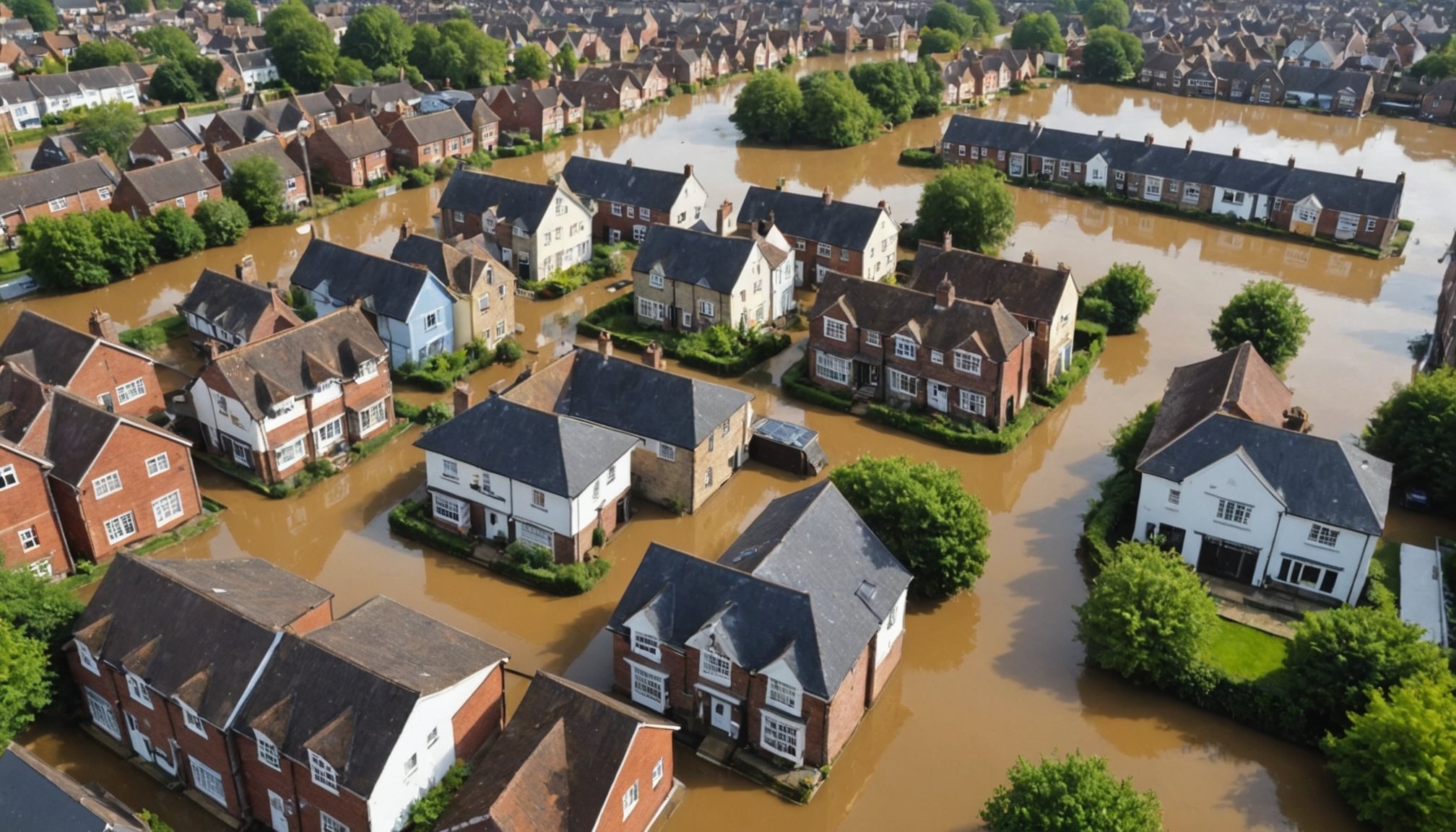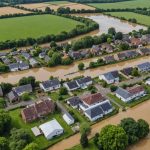Overview of Flood Risk Assessment
Understanding flood risk assessment involves evaluating the potential of flood occurrences and their impact on properties. This approach is crucial for identifying vulnerabilities in properties and preparing adequately to mitigate associated risks. In the UK, flood zones form a critical part of this assessment.
How Flood Zones Are Classified
In the UK, flood zones are classified primarily by the Environment Agency based on the likelihood of floods occurring. These zones range from flood zone 1, which indicates a low probability, to flood zone 3, which suggests a high probability of flooding. Properties situated in higher-risk zones require more comprehensive risk management strategies.
In parallel : Essential Tax Insights for UK Investors: Navigating Property Purchases Through a Limited Company
Role of Property Surveys
Property surveys play a significant role in flood risk assessment by evaluating the specific characteristics and location of a property that might make it susceptible to flooding. These surveys help identify potential preventative measures and inform decisions, such as whether additional insurance coverage is necessary or if modifications are needed to lessen flood impact. With accurate property surveys, stakeholders can make informed decisions regarding property investments and safety measures.
Insurance Options for Flood Risk Properties
Navigating insurance options for properties at flood risk can be challenging, but understanding the available choices is essential. In the UK, two primary types of flood insurance are offered: standard homeowner policies with flood inclusions and specialised flood protection coverage. Standard policies typically provide some level of flood coverage, but they may not be sufficient for high-risk areas. Specialised insurance can offer more comprehensive protection tailored to flood-prone properties.
When selecting insurance options, policy coverage and exclusions are crucial considerations. A thorough review is necessary to ensure adequate protection, especially in areas prone to severe flooding. Pay attention to policy exclusions, as insurers might not cover specific incidents or may impose limitations on claims related to recurring floods.
Insurance premiums for high-risk properties can vary substantially, influenced by several key factors. These include geographic location, property elevation relative to known floodplains, and the property’s flood damage history. Additionally, measures taken to mitigate flood risks, such as installing barriers or raising electrical systems, can impact premium costs. Understanding these factors can help property owners make informed decisions and potentially reduce their insurance expenses.
Legal Responsibilities for Investors
Understanding the legal obligations tied to property acquisition can shield investors from unforeseen liabilities. One critical aspect is the requirement for disclosing flood risk to potential buyers. Without transparency, investors risk not only the trust of buyers but also face possible litigation.
Ensuring comprehensive due diligence during property transactions is paramount. This means examining flood maps, assessing historical data, and engaging with local authorities to understand the susceptibility of a property to flooding. The failure to perform such due diligence can severely affect property investment outcomes.
Neglecting to address flood risk in legal agreements can have dire consequences. Investors could confront legal battles, financial losses, or even forced property markdowns. Therefore, it is essential to integrate risk assessments into all legal agreements systematically. Crafting thorough disclosures and agreements that evaluate and mitigate flood risks will better position investors to operate within legal frameworks and protect their investments effectively.
By implementing these strategies, investors ensure compliance with legal prerequisites, thus safeguarding both their capital and reputation in real estate ventures. Emphasising transparency now prevents challenges later and affirms ethical investment practices.
Financial Implications of Buying in High Flood Risk Zones
When considering purchasing property in high flood risk zones, understanding the financial risks is crucial. Flood-related damages can lead to significant out-of-pocket expenses, impacting the property values and limiting potential appreciation. These risks could drastically lower a property’s market value and make it challenging to sell in the future. Buyers must be prepared for these outcomes, factoring them into their investment decisions.
From an investment considerations standpoint, properties in flood-prone areas often require special insurance, adding to ongoing costs. Obtaining financing might also pose challenges as lenders may be hesitant to approve mortgages for at-risk properties. They might require additional conditions or even charge higher interest rates to mitigate their own risks. Understanding these obstacles early on is essential for investors aiming to make well-informed decisions.
Moreover, the potential decrease in property values can affect a buyer’s long-term investment strategy. It’s vital to weigh these aspects against the initial purchase price and consider alternative options or protective measures, such as investing in flood defense systems. Addressing these concerns early can better position property owners in safeguarding their investments from unforeseen financial setbacks.
Tips for Mitigating Flood Risk
Managing flood risk begins with a proactive approach to risk mitigation. Homeowners can take several steps to reduce flood vulnerability in their properties. One effective measure is the installation of flood barriers and the elevation of critical systems such as electrical panels and heating systems. These modifications can substantially decrease potential damage during a flood event.
Flood prevention also involves strategic landscape management. Creating a rain garden or using permeable materials for driveways and walkways can help absorb excess water, reducing surface runoff. This approach not only lessens flood risk but also enhances the aesthetic appeal of a property.
Further, consider installing backflow valves in plumbing systems to prevent sewage backups—a common problem during floods. Regular maintenance and inspections of gutters and drainage systems are crucial for minimizing water accumulation around your home.
In addition to property improvements, access to reliable resources is vital for ongoing risk assessment. Local government agencies and environmental groups often provide valuable data and support. Staying informed through these channels can aid in better flood preparation and planning. While no strategy can completely eliminate flood risks, these steps can significantly safeguard your home and investments.
Case Studies and Expert Opinions
Understanding successful flood mitigation strategies in real estate comes from examining both case studies and leveraging expert insights. One notable example is a housing development in New Orleans that implemented advanced water diversion systems. This involved a combination of natural barriers and engineered solutions like levees and pumps, significantly reducing flood impact and property damage.
Real estate professionals operating in flood risk zones, such as those on the Gulf Coast, emphasize the importance of preemptive planning. An experienced real estate analyst from Miami highlighted the value of elevating structures and using flood-resistant building materials. These measures not only protect properties but also enhance their marketability and value.
Case studies further reveal that proactive communication with local authorities can improve infrastructural resilience. This collaborative approach allows for more precise flood risk assessments and efficient allocation of resources to vulnerable areas.
For investors, lessons learned include the importance of thorough due diligence. Understanding flood history and investing in comprehensive insurance policies are crucial. Knowledge from experts in these areas can guide buyers in making informed decisions, safeguarding their investments while contributing to safer, more resilient communities.











